I – Practice
With the acoustic measurement tools available today, it’s easy to measure the overall transient response of a room. Free software such as RoomEqWizard, combined with a $50-100 measurement microphone and an inexpensive sound card can do a quick and accurate job. Often a look at the energy-time curve plot can show reflections from a speaker at specific time delays that you can associate with a room. You can then begin the tedious process of placing absorptive material at a suspected reflection point and see if the ETC changes.
Back in the 20th Century, HiFi enthusiasts would use a hand mirror held against a wall to find reflection points where absorbers would be placed.
Today, it’s possible to build a CAD model of the room, input reflection coefficient data for all the materials, and use ray tracing, FEM, BEM or similar techniques to calculate reflections and perhaps auralize (simulate listening in) the room. Doing so takes time and a fair amount of skill and experience.

Placing absorptive material in the room helps to control bass resonances and control early reflections that cloud precise perception of “imaging” due to confusion within the Haas effect region. If the room is large enough, diffusion may be employed instead of absorption, either practical diffusers or those based on one- or two-dimensional Schroeder sequences.
Often, as the company “part-time room acoustics expert”, I’m faced with setting up a quick demo or trade show exhibit where I might have five minutes to make a tuning. I can’t set up a measurement setup that quickly and get useful results. But I can use a three-dollar tool to do a best-effort job in five minutes. And, the more you use it, the better your hearing perception can become.
This tool is a “dog trainer’s clicker”. It’s basically a springy metal disc in a plastic case with a button. When you press the button, the disc flexes and emits a loud click. This is much louder and quicker than a finger snap, and it’s more repeatable than a hand clap. You can get a rough idea of the reverberation time of a room by just walking in and clicking. Doing so will usually also excite any flutter echos.
However, absorber placement is usually a two-person job. One person clicks the clicker near a speaker, and the other is in the listening position. The listener can turn his head to try and locate reflections. You then place your foam absorbers, moving blankets, rugs, curtains, or other absorptive material where you think you hear the reflection and see if it changes the sound.
One can argue that if you don’t hear a difference, the absorber is unnecessary for imaging purposes. Alternately, the argument can be made that while a number of reflections are masking each other to the point that one can’t be distinguished, they are all degrading imaging. Thus you may need some judgement and experience to place absorbers with this technique.
Realistically, this is not a tool to use when you have time for something better. But for three dollars, you can put it in your briefcase or backpack “just in case”.
You may find that after using this for a while, your ability to hear room reflections will improve.
II – Analysis
The statement has been made above that the clicker is “much louder and quicker than a finger snap, and it’s more repeatable than a hand clap”. Let’s see if the science backs up that claim.
I recorded a typical clicker through a Rode Lavalier mic and a RME Babyface running at 96 kHz, then analyzed the results in Audition. (A ¼” measurement mic like an Earthworks would be better for this, but I did not have one at hand.) I also recorded a hand clap and finger snap.
From the time waveforms, it’s obvious none of these signals are Dirac impulses. The dog clicker disc, perhaps due to resonance with its enclosure or itself, is really close to a tone burst. The hand clap is closest to an impulse, but it still appears to have a lot of distinct frequency components.
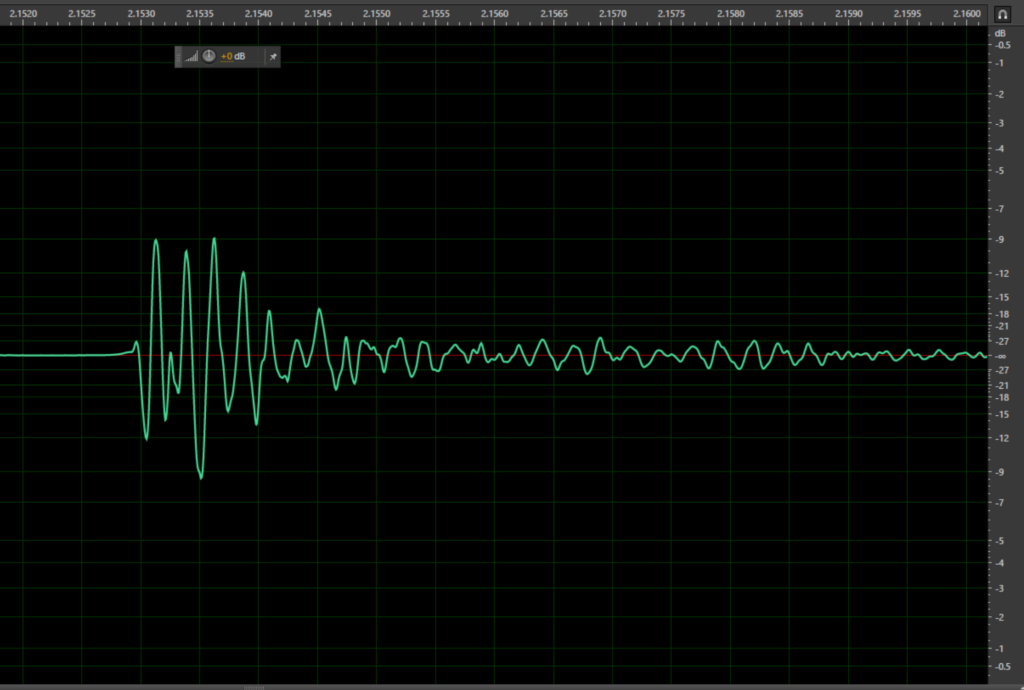
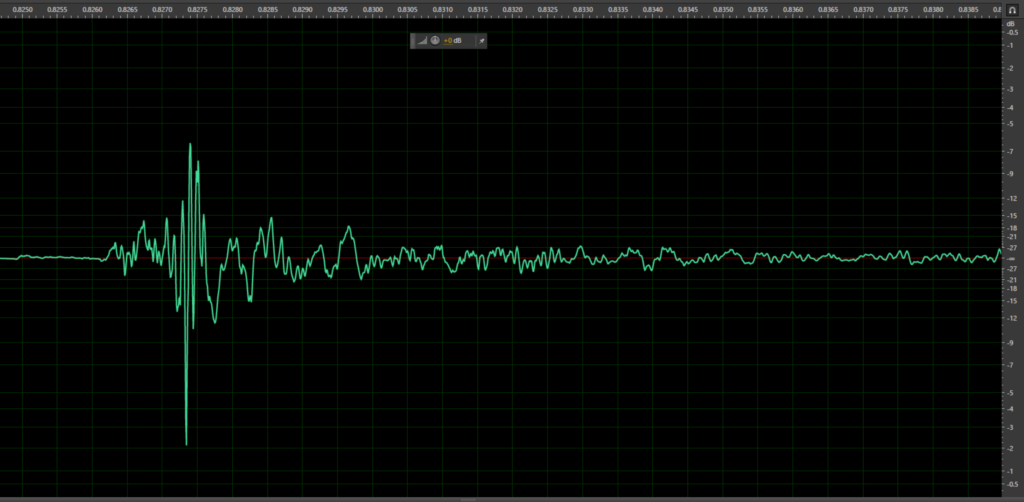
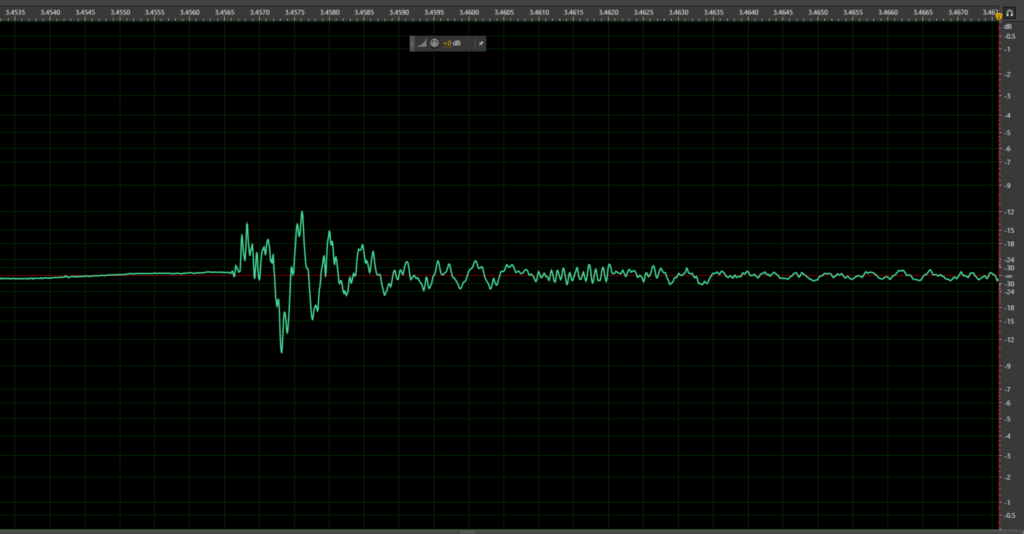
Thus, let’s use Audition’s frequency analysis window. For the hand clap and finger snap, there is a main peak about 2 kHZ with many other frequency components. The dog clicker is much closer to what you would expect from a 4 kHZ tone burst and the energy is concentrated in the octaves where imaging and localization is strongest, with no other components. That’s one reason it works will for this purpose.
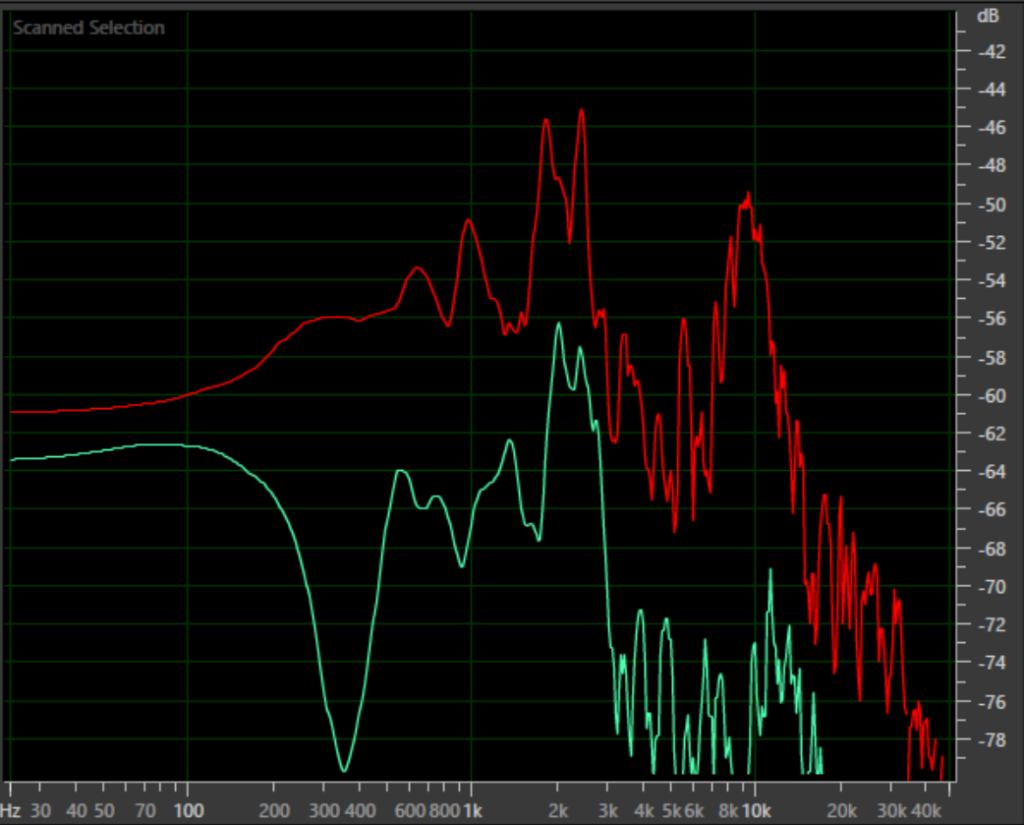
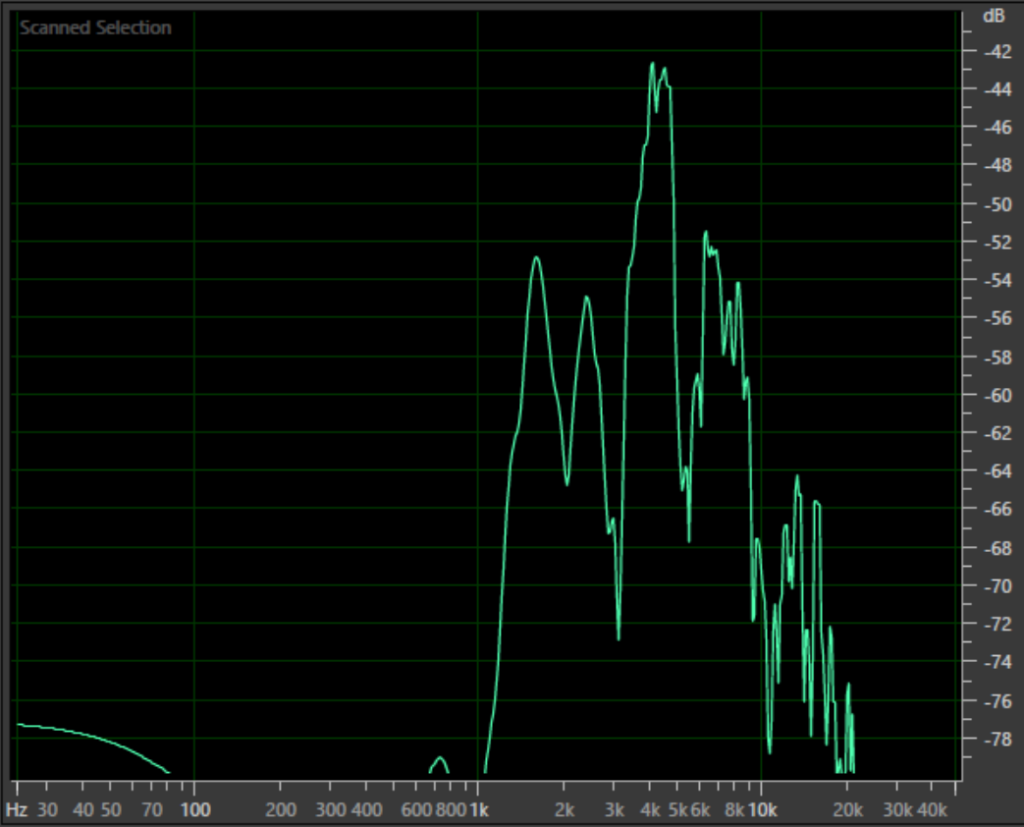
Repeatability is also a factor. At least I have trouble making hand claps or finger snaps that sound identical. Hearing the same sound as you make changes to the room is key to this technique.
I have heard others use a spring bar-type mouse trap for generating an impulse. I have not tried that.